Operation Breakthrough: Innovations from FEAS
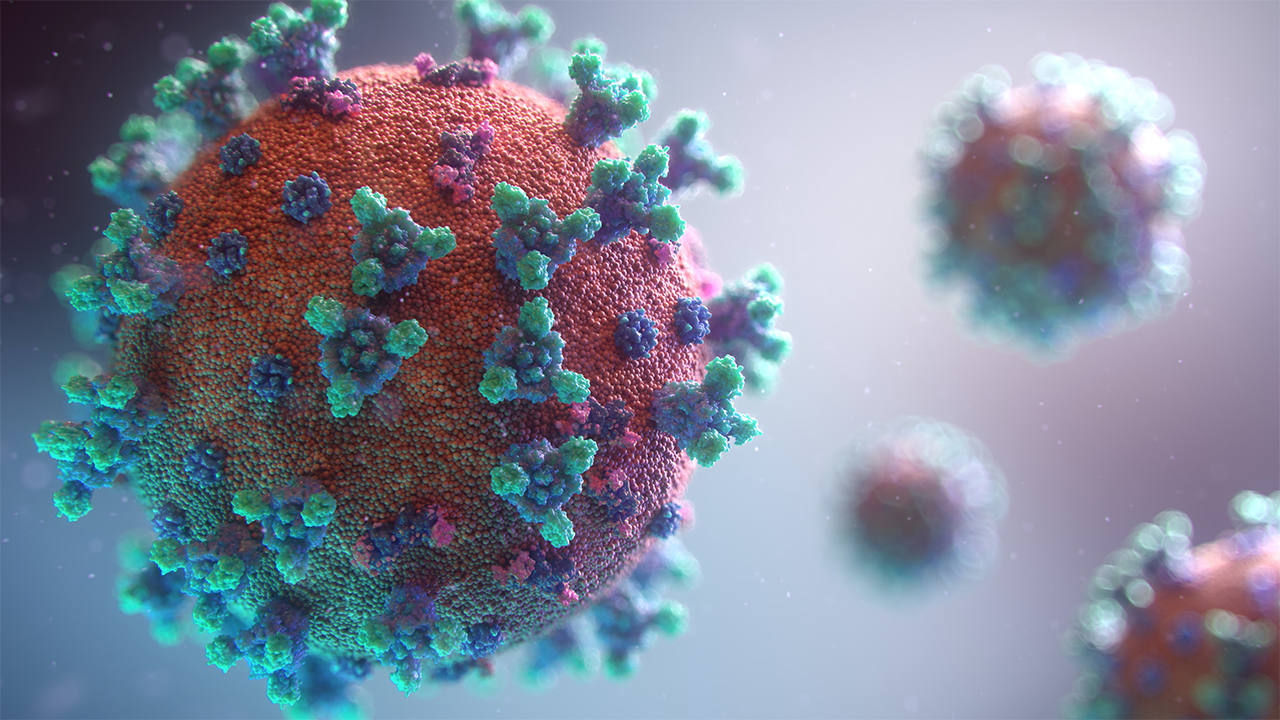
Operation Breakthrough: Innovations from FEAS is a new initiative from the Office of Social Innovation (OSI), hosted in partnership with the Faculty of Engineering and Architectural Science (FEAS). This series brings together researchers and educators (faculty, staff and students) from Toronto Metropolitan University to share with the community and beyond, innovations they have made in responding to COVID-19 and the societal changes that have occurred.
Submissions to the repository are being accepted on an ongoing basis. Please submit your project via the (google form) project submissions form (external link) .
Video Interviews
Watch the six-part video series featuring interviews with faculty, staff and students from across FEAS on their innovative responses to the pandemic and their contributions to societal change. Click here to watch the full series (external link, opens in new window) !
Episode 1: Outdoor Space in Urban Apartment Housing with Dr. Terri Peters.
Episode 4: Automatic Endometrial Cancer Diagnosis with Dr. Dafna Sussman.
Episode 2: Laptops4Students with Ronald Noronha and Awais Ullah.
Episode 5: Safeguarding the Workforce Against COVID-19 with Dr. Sharareh Taghipour and Dr. Mohammad Reza Bazargan Lari.
Episode 3: Engineering COVID-19 Fashion with researchers from FCAD and FEAS.
Episode 6: Ventilator-Induced Lung Injury with Dr. Sinthuran Jegatheeswaran.
Project Repository
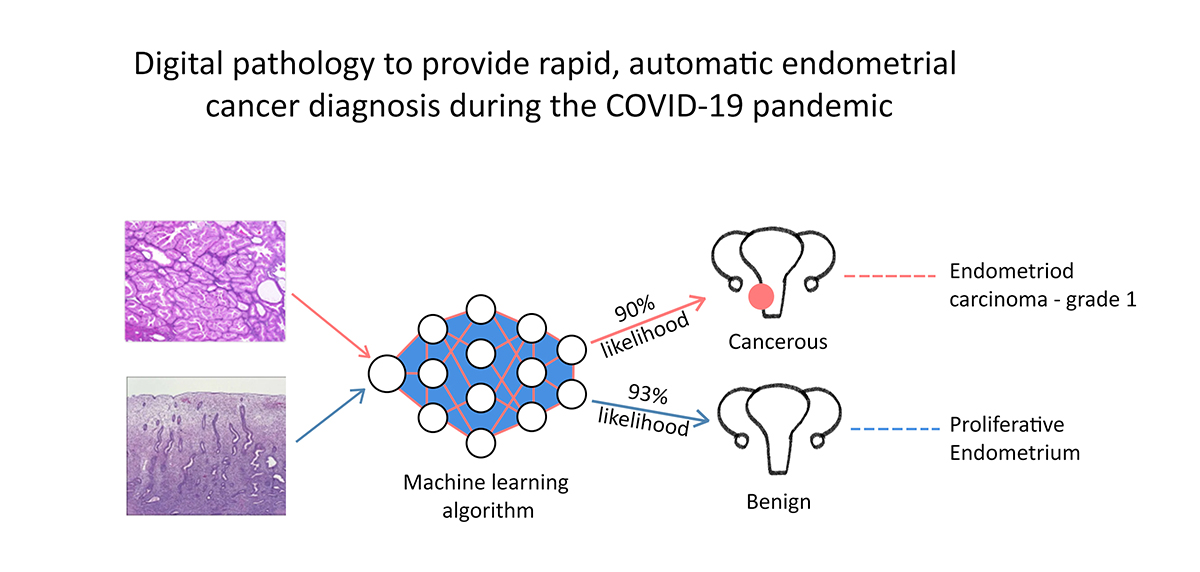
Project Name: Digital Pathology to Provide Rapid, Automatic Endometrial Cancer Diagnosis During the COVID-19 Pandemic
Description: Endometrial cancer is the most common gynecologic malignancy, with a lifetime incidence of 3.1%. It typically presents early with abnormal uterine bleeding and has a high 5-year survival rate of over 90%, making timely detection paramount. Diagnosis is via an endometrial biopsy, which offers a detection rate of 95%. Yet, visual assessment of biopsies by pathologists is a challenging task due to the variations in textures, appearance, and heterogeneous structure. These challenges make visual assessment a time-intensive, laborious process, which frequently depends on the pathologist’s experience and their subjective interpretation.
During the current COVID-19 pandemic, access to healthcare services has been restricted to urgent care. Urgent care includes the rapid assessment of women with abnormal bleeding using endometrial biopsy. Nonetheless, many services have been reduced/redirected in order to protect healthcare workers from unnecessary exposures, as well as to centralize healthcare services towards the most critical areas. This has introduced potential time-lags in pathology review and corresponding increases in patient anxiety.
Opportunities to improve workflow and limit healthcare provider exposure during the COVID-19 pandemic are critical. Digital image processing using deep learning (DL) algorithms provides one such opportunity and has been shown to accurately classify medical images, including H&E stained histology slides.
This project aims to develop a novel automatic algorithm to expedite endometrial biopsy diagnosis during the COVID-19 pandemic, thereby ensuring and even improving patient care while protecting healthcare workers.
Team: Dr. Dafna Sussman, Dr. Mara Sobel and Gulisa Turashvili (Biomedical Engineering)
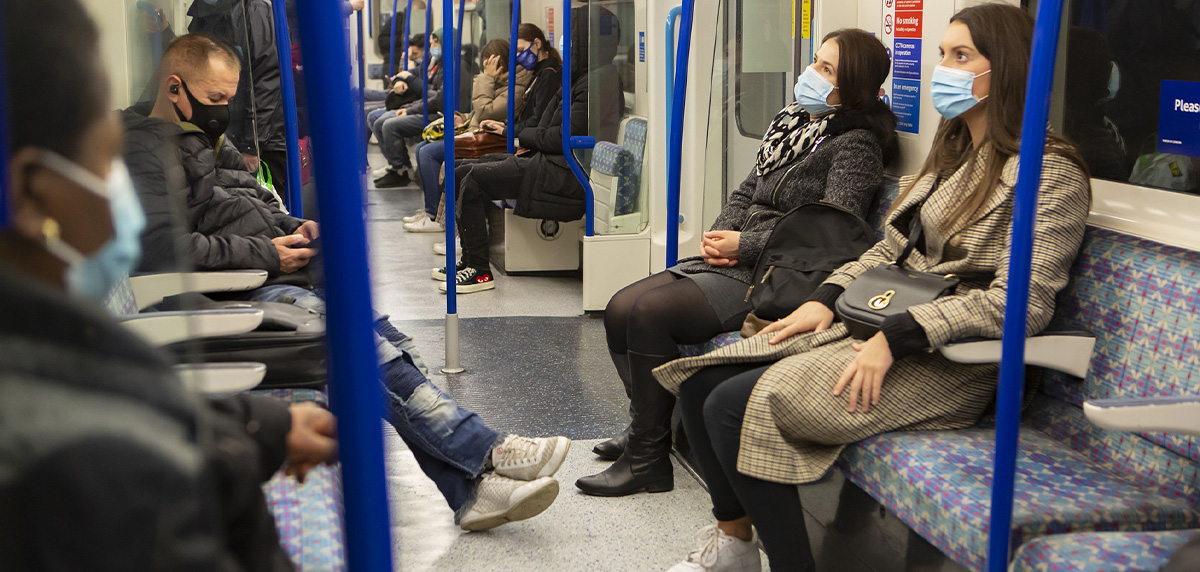
Project Title: The CIVICLabTO Partnership and the CIVICLabTO Toronto Ambient Air Quality Impacts from COVID-19 Study
Description: The CIVICLabTO Toronto Ambient Air Quality Impacts from COVID-19 Study is a partnership between Toronto Metropolitan University, the University of Toronto, and the City of Toronto’s Environment and Energy Division on three separate studies which seek to identify changes in air quality in the city that may have resulted from changes in human behaviours, employment, energy use, transportation patterns and industrial production before and during the pandemic.
The CIVICLabTO Toronto Ambient Air Quality Impacts from COVID-19 Study consists of three distinct research studies. The following report provides an outline of the methods behind each. The title of each study is as follows:
- Study #1 CivicLabTO Toronto Ambient Air Quality Impacts from COVID-19 Survey (Toronto Metropolitan University and the City of Toronto)
- Study #2 Stratifying air pollution changes across Toronto using satellite data (the University of Toronto and the City of Toronto)
- Study #2 Understanding traffic-related changes using ground-level monitors (the University of Toronto and the City of Toronto)
The CIVICLabTO partnership engages Toronto’s Higher Education Institutes (HEI) to engage in innovative research in partnership with the City. Outcomes of the CIVICLabTO Toronto Ambient Air Quality Impacts from the COVID-19 Study will contribute to the Toronto Climate Change Action Strategy by providing evidence on the interactions between sources of air pollutants and human-related activities.
Team: Dr. A. Emre Karata, Dr. Fatih Sekercioglu and Christian Hui, Ph.D. Student, Mitacs Doctoral Intern/Research Assistant
Project Title: COVID-19 Contact Tracing Wristband Development
Description: The rapid spread of COVID-19 has resulted in taking drastic measures in isolating individuals suspected of infection to ensure community safety. Currently, suspected patients are advised to self-quarantine at home, which can be impossible to track and confirm compliance. Although some countries have ensured enforcement through smartphone apps, such measures can be circumvented by simply leaving the smartphones at home.
Researchers from Toronto Metropolitan University and the University of Toronto, in partnership with Dapasoft Inc., will develop a hybrid system (a lightweight non-detachable wristband with accompanying mobile app) for voluntary or authorized assigned tracking of persons who are advised or subject to a self-quarantine period. The geolocation feature of smartphones, combined with consistent connection with the wristband, will create a monitoring system that is difficult to break. The system will also have options to collect biomedical data such as heart rate, temperature, and self-reported data such as respiratory symptoms, time and duration of contact with others. The collected data (with appropriate ethics approval from participating institutions) will be analyzed using novel artificial intelligence algorithms to measure primary and secondary outcomes.
The primary outcome of this project is measuring compliance, which will be calculated through identifying the movement patterns of individuals. Secondary outcomes include risk assessment of outbreaks and visualization maps of clusters of outbreaks. We will employ novel information fusion mechanisms, combined with unsupervised clustering approaches that we have recently proposed to generate intuitive visualization of clustering maps, that will be highly beneficial for non-technical domain experts (e.g. healthcare practitioners) to identify trends within the data. We plan to package the algorithms in an easily deployable analytics and visualization tool that can potentially be utilized in case of a similar future outbreak.
Team: Dr. Naimul Khan and Dr. Ling Guan (Computer Engineering)
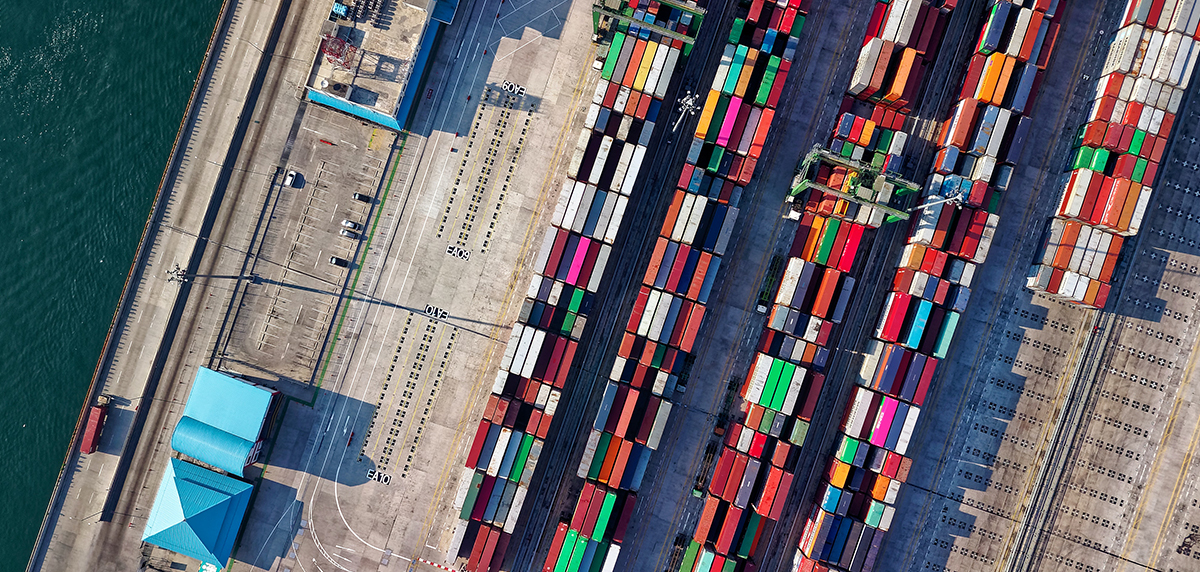
Project Name: Designing a Resilient and Survivable Supply Chain Under Disruptions: Post-COVID-19 Perspective
Description: Human-made or natural disasters have a large impact on supply chain operations. With a deepening of globalization, the supply chain network has become very complex and vulnerable to disruptions. In light of the outbreak of the global pandemic COVID-19, all business sectors have growing needs to restructure their operations with a resilient and sustainable supply chain. In today’s diversified world, the supply network of one industry has a cross dependency on the supply network of a different industry. For example, the supplier of an automotive company may also be a producer of an important component for manufacturing respiratory valves. Moreover, designing a resilient supply chain brings challenges in ensuring cost-effectiveness and sustainability. However, to the best of our knowledge, no study has investigated these issues.
With this gap in the literature, we propose a detailed study of effective management of the supply chain during large disruptions and supply chain recovery post-COVID-19. To execute our project, we have partnered with Canada’s largest grocery and pharmacy retailer, which has a broad network of corporate and franchised stores across the country. The industry partner is the ideal to collaborate in building a better understanding of complex supply chains and logistics. Both empirical and quantitative modelling will be conducted addressing current major business challenges in the food, pharma, and textile supply chain of the industry partner. The results of our study will support the implementation of cost-effective and resilient supply strategies for the company. As a long-term goal, the proposed study will focus on designing a sustainable supply chain, which can operate efficiently during large pandemics and continue to serve the Canadian with essential goods and services.
Team: Dr. Mohamed Wahab Mohamed Ismail (Industrial Engineering)
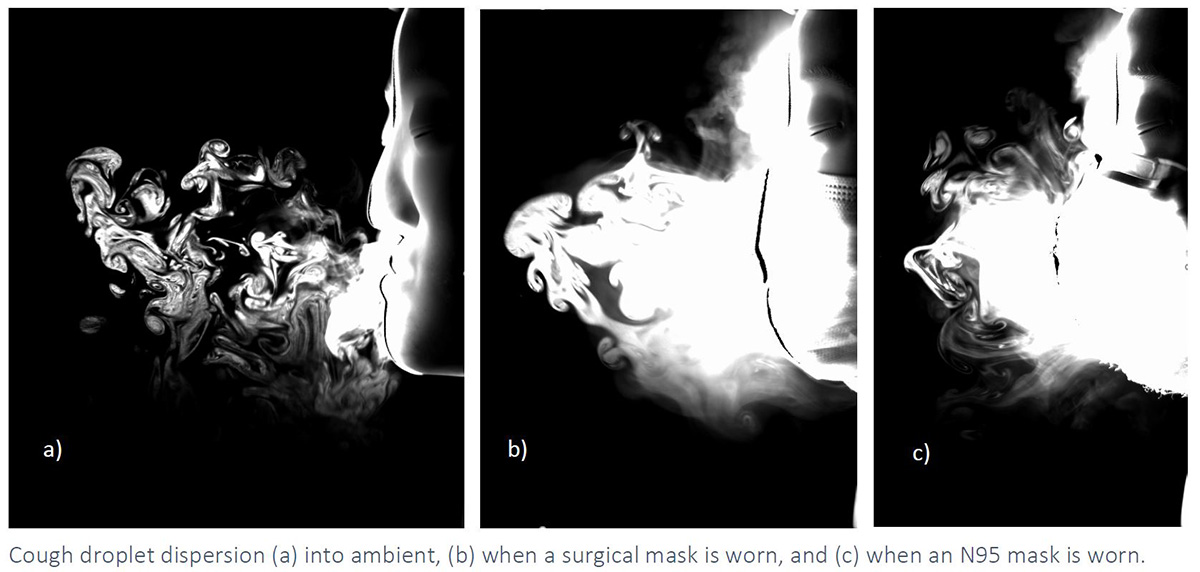
Project Name: Engineering COVID-19 Fashion: Designing the Most Effective Face Masks for the Canadian Fashion Industry
Description: Our multidisciplinary team is working to develop a comprehensive experimental and numerical framework that can be used to analyze respiratory fluid flow through and around the fabric. Using this framework, we will test various homemade/fashion mask designs to aid the Canadian apparel industry to assess the efficacy of different mask designs and materials to best prevent transmission of COVID-19. The optimal reusable mask will be developed using engineering solutions with public health guidance and fashion industry input. Leveraging the expertise of our team members from the School of Fashion, we aim to improve existing mask designs to provide a better fit for a larger segment of the population. As a result of this initiative and our partnership with a local apparel company, the Canadian customer base will have access to locally manufactured face masks sourced from Canadian materials that are effective at stopping COVID-19 carrying droplets. The successful mask designs will be licensed creative commons and will be made available to the public for personal use. This project is anticipated to result in several added benefits such as bolstering the workforce, alleviating pressure on the surgical/medical mask market, and increasing the use of mask materials made in Canada.
Team: Dr. Ahmet Karatas (Aerospace Engineering), Danielle Martin, Hyejin Lee, Tricia Crivellaro, Dr. Seth Dworkin (Mechanical Engineering), Dr. Sylvie Antoun, Mehdi Jadidi, Leya Kober and Kai Lordly
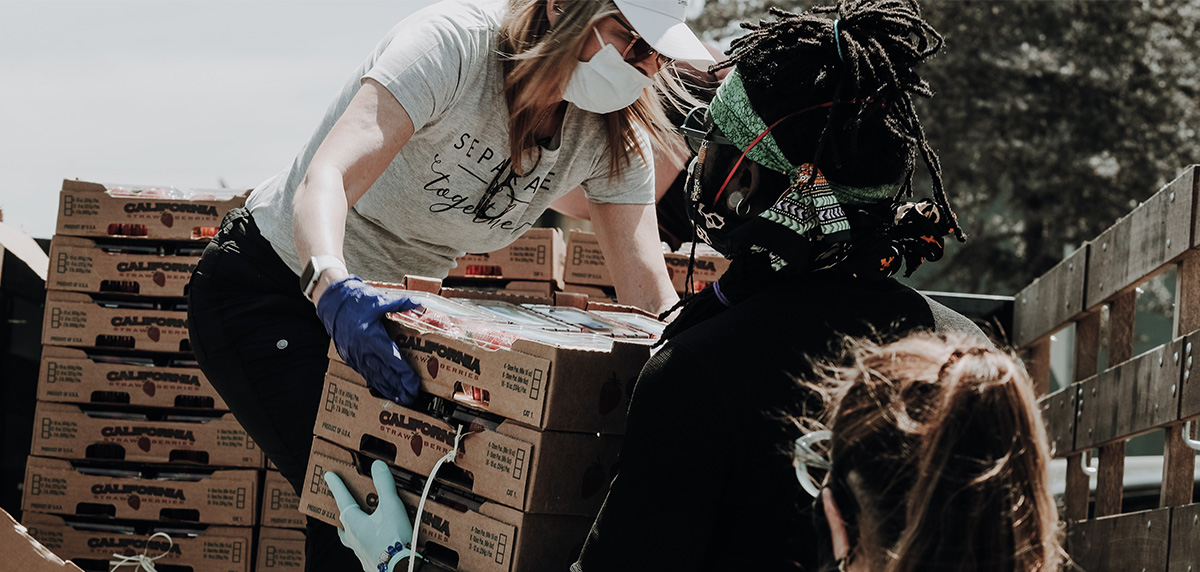
Project Name: Hydrate
Description: Climate change and 35.5 million tonnes of spoiled food Canadians throw out annually are the foundations of our business opportunity. According to a report published by Value Chain International (VCI) in 2019, $48 billion worth of food is wasted annually in Canada. This accounts for 58% of all food produced in Canada. During the processing and manufacturing phase, $21 billion worth of food is wasted, while a further $10 billion is wasted at the consumer level. This consumer waste accounts for approximately $1,776 of a Canadian family’s annual budget. Four principal sources of food waste in Canada has been identified: first, consumers purchasing items on sale and throwing surplus away; second, throwing out food before or near the expiration date regardless of edibility; third, harvests being left to rot in fields due to labour shortages, and finally thousands of acres being destroyed annually due to cancelled orders. The current solution has been to redistribute food waste to shelters and food banks or high-tech solutions like blockchain to better manage the food supply chain. Our solution is to eliminate the waste at the consumer level by creating an affordable, modular, solar-powered, automatic watering system that will allow consumers to grow and harvest in their backyard.
Team: Anoop Dhillon and Vibhor Dua (students, Aerospace Engineering)
Project Name: Kids 4D World
Description: Our platform makes a uniform connection between kids. The goal is to protect children and to break social isolation and loneliness. Making connections between children all around the world as well as proving social skills can have an immense effect on mental and physical health. Also, value-driven from children and adults' engagement in this pandemic through our online platform increases cultural exchange, social engagement, sense of recognition, and respect.
Benefits of our proposals are including but not limited to children’s decision-making abilities, self-confidence, emotional maturity, teamwork, good citizenship, and leadership skills all around the world through the use of consultative processes and structures, including but not limited to group activities, communication seminars, structured group discussions, participative and instructional workshops, and other programs to encourage them to voice their concerns and identify needs which can then be directly addressed by the Corporation.
In particular, the Corporation will seek to empower children through their participation in self-organized and self-sufficient grassroots projects, allowing them to propose, elaborate, and establish aid programs and small-scale initiatives and encourage them to participate in the governance structure of the Corporation directly.
Team: Parmoun Peyman (graduate student, Masters of Enginnering Innovation and Entrepreneurship)
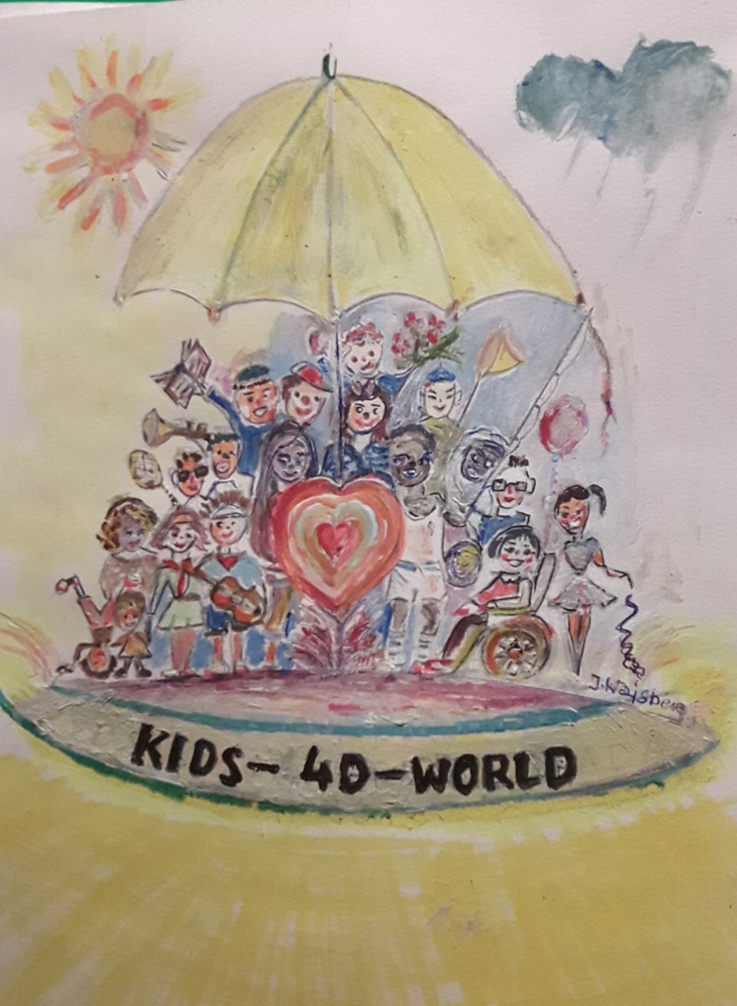
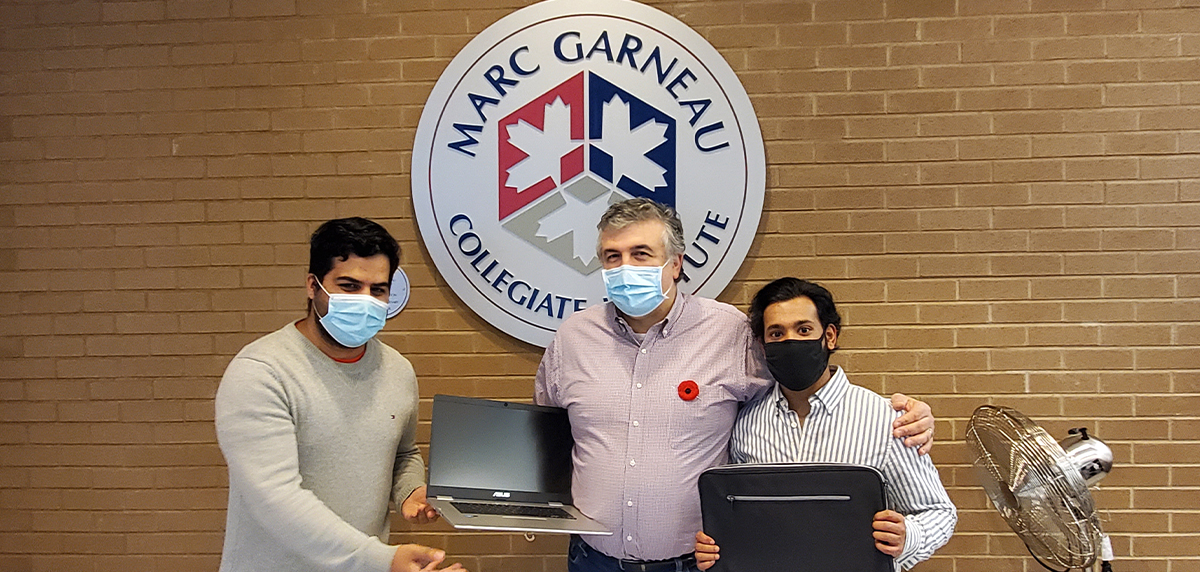
(Pictured from left to right: Awais Ullah, Carlo Di Felice and Ronald Noronha).
Project Name: Laptops4Students
Description: A huge population of high school students are not able to access devices to support their online learning. Schools have depleted all their resources and have only provided a smaller population with what they had available, leaving plenty without any devices. With COVID-19 impacting the way education is delivered, it leaves a huge segment of low-income houses where children and young adults don’t have access to technological devices to keep up with their education.
We started by accessing alumni and members directly related to the community to either provide monetary donations, excess computing devices, and mentorship. We believe that those who once were in the shoes of these same students will understand the struggles and see that this situation is unlike any they would have ever foreseen before. We want to show how the community can get together and provide for each other. There are those with extra computing devices at home which are not being used, we asked for those to be lent/given to students and if the lender is willing, then to provide a monthly check-in mentor session to ensure the students' learning is on track and set them up for a brighter future. We are in the process of exploring options for STEM workshops, to help with future development.
Currently, we are accepting donations through a GoFundMe page for Marc Garneau Collegiate Institute (MGCI). The school has been unable to provide sufficient devices, despite a continued strong demand, as the second wave hits the region. The school serves two major communities, Flemingdon Park and Thorncliffe Park which are both low-income communities, with a large population of new immigrants, and at risk children.
To date, we have raised $9,000 for MGCI and $4,000 for 5 other high schools within low-income communities. This equates to nearly 33 students who will soon have access to their own computing devices. But the journey doesn’t stop there, we hope that other alumni and members of the community reach out to students and schools who may need an extra hand to help deliver education during these trying times.
Team: Ronald Noronha and Awais Ullah (graduate students, Masters of Enginnering Innovation and Entrepreneurship)
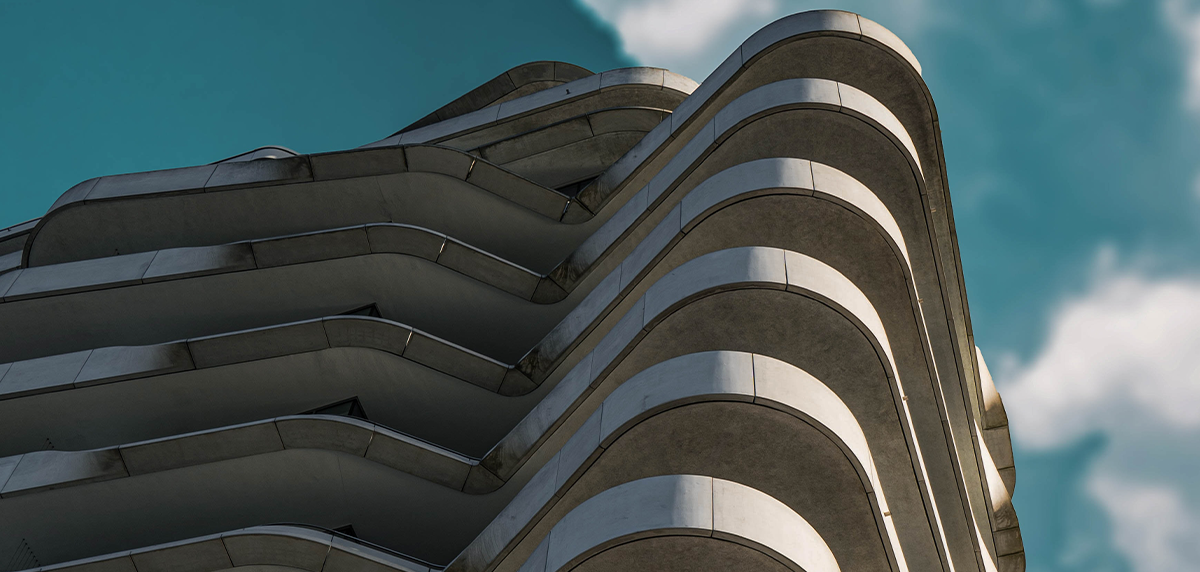
Project Name: Outdoor Space in Urban Apartment Housing: A Visual Catalogue and Analysis of Toronto’s Balconies
Description: This research project builds on Dr. Peters’s ongoing research relating to building performance and quality of life in Canadian apartment housing (Kesik et al 2019; Peters et al 2020; Peters and Halleran 2021). During the COVID-19 pandemic, inhabitants have used their balconies in various ways, for community engagement and participation, as an outdoor room for recreation, as places for dining and relaxing, and as semi-public spaces for observing the city (Poon, 2020). While most new apartment buildings have balconies, they vary in their size, geometry, orientation, and materials which impacts their effectiveness. Numerous studies have shown that green views to nature and natural outdoor living spaces in urban housing promote health and well-being (Taylor et al 1998; Kuo 2013; Kennedy et al., 2015). Apartment housing balconies have great potential to be quality outdoor spaces. This research project has three parts: 1) We carried out a literature review of apartment balcony types, their performance, and their types and combined this with a photographic survey of urban apartment balconies. The resulting visual catalogue documents more than 100 urban balconies in Toronto, Canada, taken during July and August 2020; 2) as field work is limited due to COVID-19, we asked residents for photos and dimensions of their balconies and then re-drew the floorplans, collected specific quantitative data, and made measured drawings of their outdoor spaces; 3) in parallel we have been carrying out a literature review of peer-reviewed papers about balconies from environmental psychology, engineering, and architecture and our paper presents a state of the art, and social history of the apartment balcony. In this ongoing project (May 2020-March 2021) we have found there is demonstrated need for high-quality private outdoor balcony spaces as part of healthy and equitable urban housing. This project aims to shed light on the social and architectural history and future of this important element of urban housing with findings and implications for apartment housing design and renovations.
Team: Dr. Terri Peters and Mehrnaz Adli (student, Architecture)
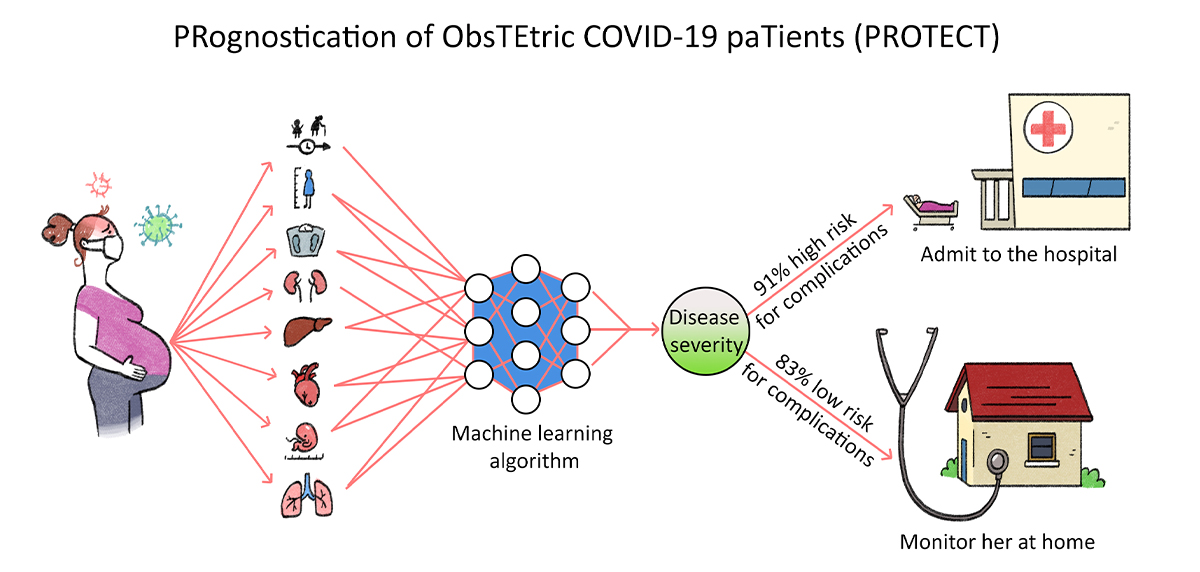
Project Name: Prognostication of Pregnant COVID-19 Patients
Description: Our society's ability to recover from the COVID-19 pandemic, preserve patient lives, and resume normal routines depends on our ability to not only diagnose early but also to predict which patients are at high risk of severe life-threatening complications and would, therefore, benefit from early intervention. Our ability to predict this becomes extremely more challenging in the case of pregnant patients, whose immunity is altered, leading to various and different manifestations and progression of their disease. To better understand the progression of COVID-19 in the pregnant population, we require a large data repository of prior pregnant COVID-19 cases, which is currently unavailable. To address this, our short term aim is to create a large COVID-19 in pregnancy repository from National and International sources, while ensuring there is no data duplication. Once a repository is created, it will still be very challenging to analyze the dataset manually due to non-trivial relationships between patient symptoms, clinical results, and disease outcomes. Thus, our aim is to use advanced artificial intelligence approaches with our large data repository to create a fast and reliable COVID-19 disease prognostication system for pregnant patients while accounting for possible changes in the virus’s behaviour over time.
As a final stage in this project, we will bring the algorithm into clinical use at Mount Sinai Hospital, one of the largest obstetric hospitals in Canada and North America, and to all Ontario partner hospitals. The repository together with the algorithm is expected to radically transform Canadian and, potentially, international healthcare providers' ability to identify, manage and treat cases of COVID-19 in pregnant patients. They will provide us with a deeper understanding of the interactions between the various pregnant patient parameters in dictating disease outcomes.
Team: Dr. Dafna Sussman and Dr. Rasha Kashef (Biomedical Engineering at Toronto Metropolitan University), Dr. Joel Ray, Medicine and Obstetrics and Gynecology at St. Michael’s Hospital (Toronto), and Drs. Wendy Whittle, Rohan D’Souza, Sebastian Hobson, Mara Sobel and John Snelgrove from the Department of Obstetrics and Gynecology at Mount Sinai Hospital (Toronto)
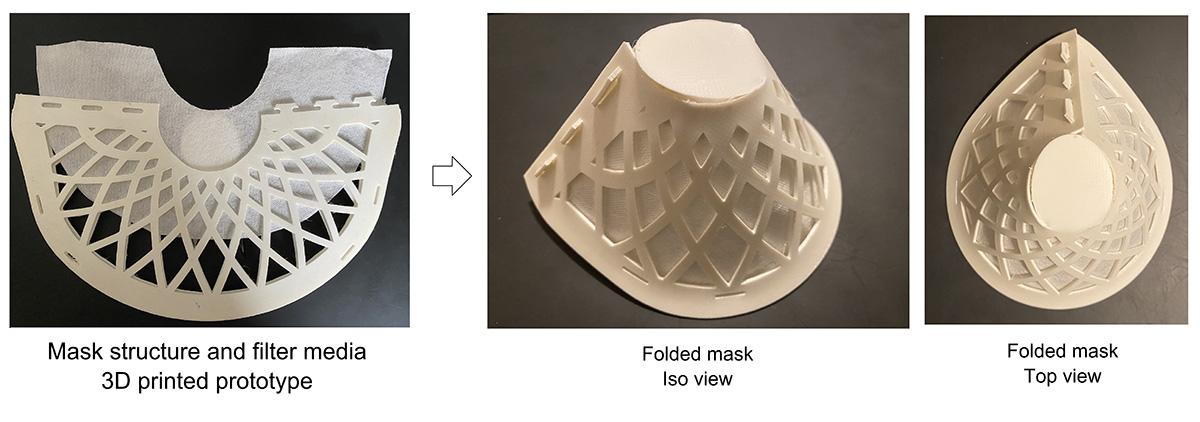
Project Name: Design, Rapid Prototyping, and Certifying a Reusable N95 Mask
Description: Due to the coronavirus pandemic (COVID-19), there has been a shortage of disposable N95 masks for frontline workers in Canada and around the world. Besides the immediate desperate need for facemasks, countries will encounter waste management challenges of N95 masks in the long term. Our project aims at addressing these two challenges by designing, manufacturing and certifying reusable N95 masks to combat COVID-19. The selected solution is foldable and separates the mask structure and filtration functionalities. This way, the mask structure can be reused after decontamination and biohazardous waste (only the filter media) will be reduced drastically. We have used rapid prototyping, 3D printing, to finalize the design and ensure manufacturability. To ensure mask certifiability per Niosh and Health Canada, in addition to outside lab testing, we developed two testing apparatuses to perform differential pressure and mask fit tests in-house. We engaged stakeholders and end-users to ensure the final reusable N95 mask meets or exceeds the performance of commercial disposable ones. Discussions with the city hospitals and the N95 decontamination forum organized by the City of Toronto are two examples. Our collaboration with the City of Toronto has proven fruitful and we will start a project soon, where we will perform differential pressure and mask fit tests on their decontaminated disposable N95 masks obtained from their employees. There is a synergy in this project, where we will learn from their decontamination efforts that will be useful for our reusable N95 mask project.
Team: Dr. Kazem Fayazbakhsh, Mohiddin Ahmadi and Michael Foppiano (Aerospace Engineering)
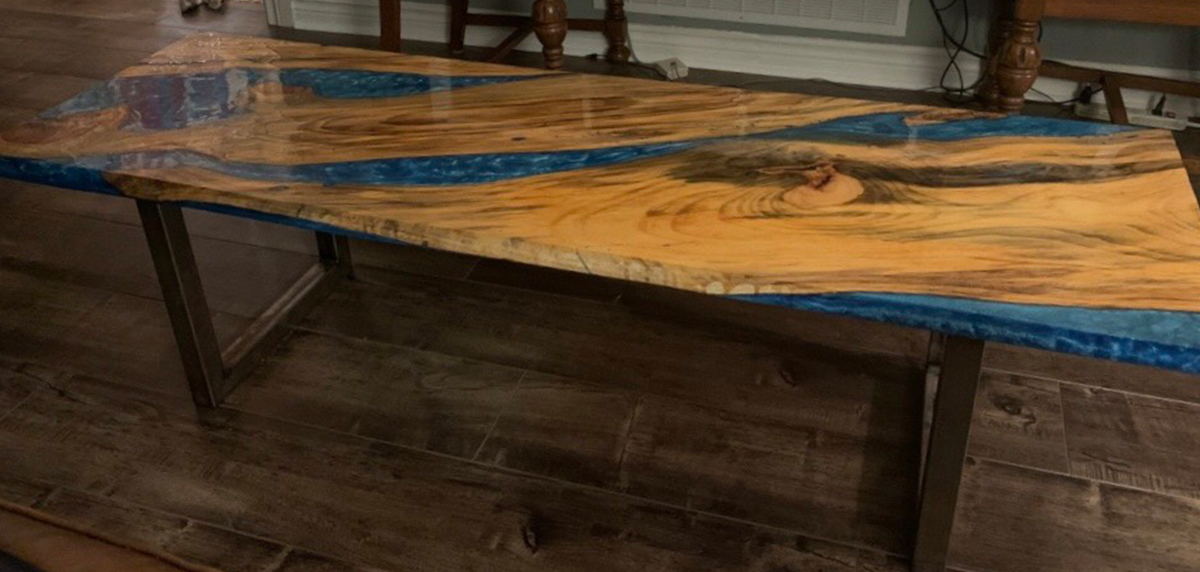
Project Name: Reuse Solution
Description: We encounter curbside household goods and electronics being thrown away. Why are these items tossed away every day and not being reused, while others are spending a lot on buying the same new items? A variety of different categories of furniture, household goods, office equipment, some appliances, and electronics are tossed away every day while many people are spending a lot on buying the same new items. Lack of time, effort, and appropriate transportation being irresponsible with recycling practices in addition to hygienic concerns related to second-hand goods are the main reasons for the items not being reused.
In 2016, the residential sector of Canada generated 100.2 million tons of waste in which 15 % of that had the potential of being reused. We address these issues as a Company. We apply the principles of the circular economy by collecting non-bulky household goods such as furniture, electronics, appliances and office equipment from individuals and the curbside pick-up companies. We repair and make them hygienic for resale or rented at fragmented prices, including delivery, allowing price-sensitive people access to defect-free household goods. Every item goes through a hygienic process and is delivered to the new owner. We remove the challenges of bringing curbside furniture home while keeping healthy standards and fractional prices. Also, we are able to make art pieces from some materials that could not be fixed, so we will reform them into new pieces of art.
Our company lessens the cost and number of discarded items city-wide while saving energy, reducing carbon emissions caused by new products during; manufacturing, packaging, and transportation stages. Our services provide job markets for the local economy while reducing the local waste and carbon footprints.
Team: Parmoun Peyman (graduate student, Masters of Enginnering Innovation and Entrepreneurship)
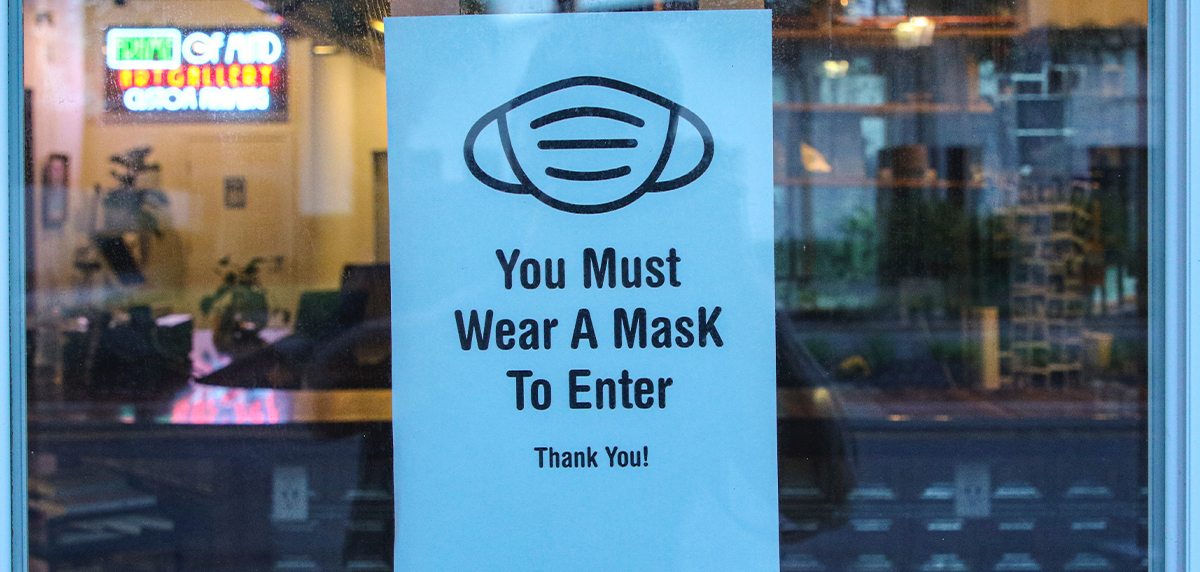
Project Name: Developing a Decision Support Tool to Optimize Manufacturing for Productivity and Safeguarding the Workforce Against COVID-19
Description: As Phase 1 of Ontario's 3-phase reopening of the economy started, the government and health and safety associations have provided more than 90 workplace safety guidelines to help employers keep their workers safe and healthy while continuing their business operation. The guidelines are sector-specific, aiming to prevent the spread of COVID-19 in various workplaces. For example, the guidelines for the manufacturing sector provide instructions on physical distancing, workplace sanitation, and adjusting onsite production schedules.
Given the workplace safety guidelines, manufacturers need to make a hard decision of determining the right measures to minimize the pandemic health risk to their employees while still maintaining the continuity of their production. The objective of this research is to develop a decision support tool, which determines the optimal daily planning of the production and workforce in the manufacturing process. The decision support tool will maximize manufacturing health and safety and minimize the production loss due to not meeting the customers' demands during the COVID-19 pandemic. It is expected that the implementation of the tool's recommended optimal plans will result in maximizing the safety of personnel, meeting the demand, and minimizing the production cost. The tool will help manufacturers adhere to the workplace safety guidelines and have their businesses running during the pandemic.
Team: Drs. Sharareh Taghipour, Mohammad Reza Bazargan Lari, Mani Sharifi and Arash Zaretalab (Industrial Engineering)
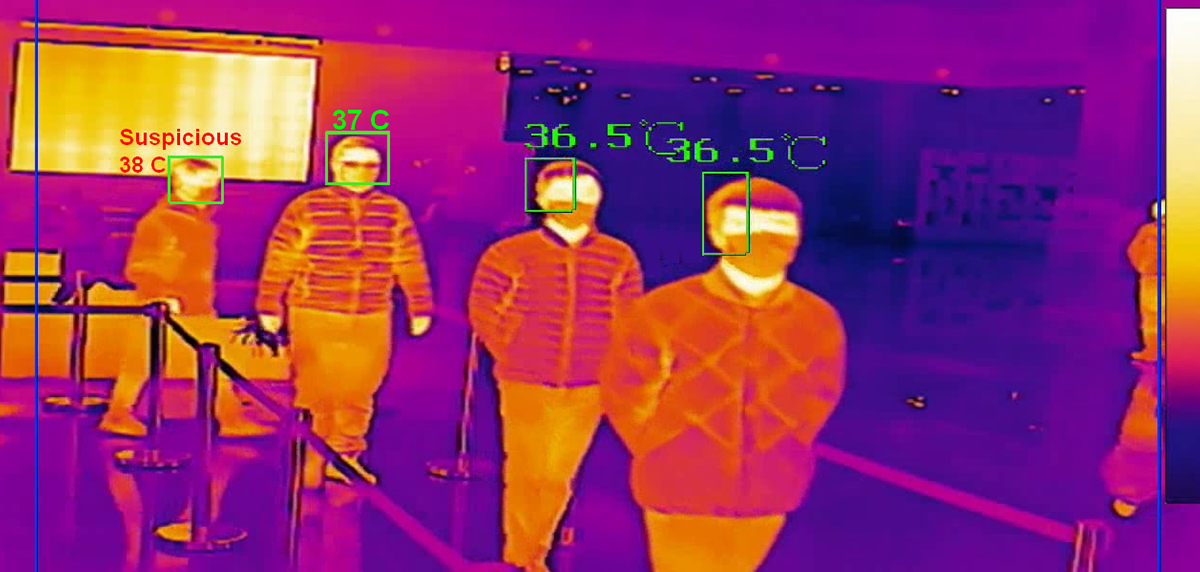
Project Name: A Thermal-Optical Vision System for Identification and Localization of Symptomatic COVID-19 Patients
Description: According to World Health Organization (WHO) officials, timely identification and isolation of individuals infected with coronavirus is the key to containing the spread of the virus. With a shortage of testing kits, laboratory supplies, and personnel, temperature screening remains the primary approach to identifying high-risk individuals. Thermal screening is non-invasive and gives immediate results for one of the primary symptoms of COVID-19. However, current methods of COVID-19 public screening in 'high traffic' environments involve handheld temperature measurements which are considered inefficient, ineffective, and potentially risky to the screener and other acutely ill patients. Relying on only elevated skin temperatures (and not core temperatures) using distance measurement units might also give false positive classification results. It is hypothesized that fusing temperature measurements with body gait patterns (markers) would increase the accuracy of identifying symptomatic COVID -19 patients.
In this project, researchers from Ryerson University are partnering with Altius Analytics Labs to enhance the scalability and efficiency of COVID-19 public screening and disease tracking. The main goal of the project is to develop, validate, and test a novel thermal-optical vision-based system to automatically identify symptomatic individuals on a large scale and track their movement through an environment. The outcome of this project will have a significant impact, protecting public health for the current pandemic and providing safeguards against a potential second wave. In addition to medical screening applications, results can be extended to the human factors industry as well. Finally, the project includes significant multidisciplinary training of highly qualified personnel (HQP) in established and emerging areas, including kinesiology, instrumentation, machine vision, signal processing, and machine learning. HQP will also have opportunities to work with the project partner and gain career relevant industrial experience.
Team: Dr. Farrokh Janabi-Sharifi (Biomedical Engineering) and Dr. Soosan Beheshti (Electrical Engineering)
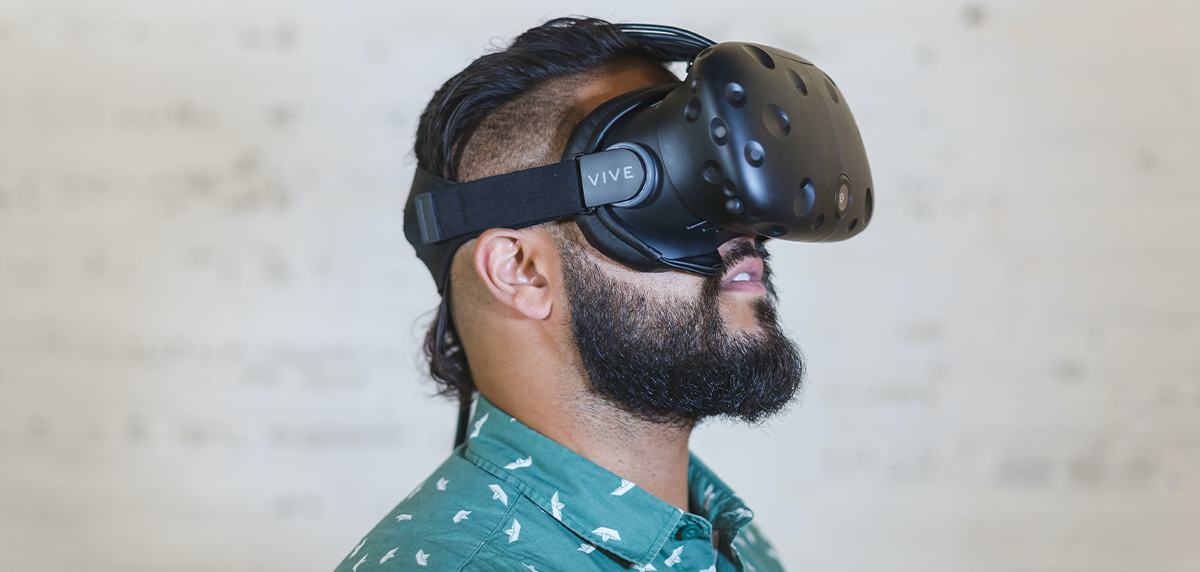
Project Name: COVID-19 and the Efficacy of Using Virtual Reality Scenarios to Safely Train Police in Mental Health Crisis Response
Description: In partnership with Dark Slope, researchers from Toronto Metropolitan University, Wilfrid Laurier University, and the University of Victoria plan to develop a VR-training system to ensure that scenario-based police training in de-escalation and mental health crisis response can continue during the COVID-19 pandemic.
At the request of the Ministry of the Solicitor General, the research team recently developed their evidence-based training protocol into a standardized curriculum for officers across Ontario. However, the social isolation measures due to COVID-19 have made scenario-based training an impossibility. This suspension of police training in mental health crisis response dangerously compromises both public and officer safety, particularly in light of the current upsurge in police calls for service to respond to citizens in mental health crisis.
The research team intends to migrate its scenario-based curriculum onto a Virtual Reality (VR) platform. This new approach, which we will deliver in an 8-month timeframe, will ensure mental health crisis response training can continue safely during pandemic restrictions without compromising the effectiveness of the evidence based training protocol. Within this time-frame, we will have a clear vision of how to incorporate new elements (social-distancing guidelines, officer and public safety, COVID-related stressors) into training scenarios, and how to maximize the potential of VR as a platform for training. Specifically, we will gain insights into how VR can be used to reduce the reliance on in-person actors on-site; how a hybrid decision-making system can optimize tradeoffs between responsiveness and scalability with Non-Player Character (NPC)/avatars; how scenarios and training can evolve to incorporate COVID-19-specific elements in a VR context; and, more generally, how VR can increase the effectiveness and scalability of scenario-based de-escalation training. As a response to COVID-19, the research applies technology and engineering research in direct service to evidence-based approaches to help create a safer, more equitable relationship between law enforcement and the wider society, particularly citizens who are often marginalized such as those living with serious mental illness.
Team: Dr. Naimul Khan (Computer Engineering), Dr. Richard Lachman (RTA School of Media), Dr. Natalie Alvarez (Theatre and Performance Studies)

Project Name: Ventilator-Induced Lung Injury: Computed Tomography (CT) and Computational Fluid Dynamics (CFD) Modelling
Description: According to the World Health Organization (WHO), there have been 39 million confirmed cases of COVID-19, including 1 million deaths worldwide. At the peak of the COVID-19 global outbreak, there has been an upsurge in the global demand for mechanical ventilators to provide sufficient respiratory support for COVID-19 patients. However, due to regional overstretching of lung tissues associated with the inflation pressure of the mechanical ventilators, the viscoelasticity of the lungs tissues dissipates over time and completely loses its natural ability to inflate and deflate. The inability to restore the viscoelasticity of the lung tissues may cause the patients to completely dependent on the ventilator support for a prolonged time period. Understanding the effect of ventilator operating conditions on the lung tissue can be very helpful for healthcare professionals, especially in these COVID-19 times, to employ therapeutic approaches and innovations to design ventilators with minimal mechanical forces. In this perspective, we are employing computed tomography (CT) and computational fluid dynamics (CFD) modelling to study the potential impact of ventilator operating conditions on the lung tissues. Computed tomography will be initially used to experimentally observe the lung's injuries associated with a mechanical ventilator. The CFD models will be developed and validated using quantitative CT methods. With regards to post-ventilator treatment for restoring viscoelasticity of the lung tissues, the effect of respiratory yoga exercise on respiratory health will be experimentally studied using CT. A few experienced yoga practitioners from ISHA USA will be volunteering to provide us with the CT scans of their lungs. The 3D segmentation mask of their lungs will be used for further CFD model simulations and predictions.
Team: Dr. Sinthuran Jegatheeswaran, Dr. Haibo Zhang, Dr. Miranda Kirby and Dr. Farhad Ein-Mozaffari (Chemical Engineering)
Spotlight on Operation Breakthrough
Read our interview with Dr. Samantha Wehbi and Dr. Miljana Horvat on the creation of Operation Breakthrough and its impact on cross-disciplinary partnerships.